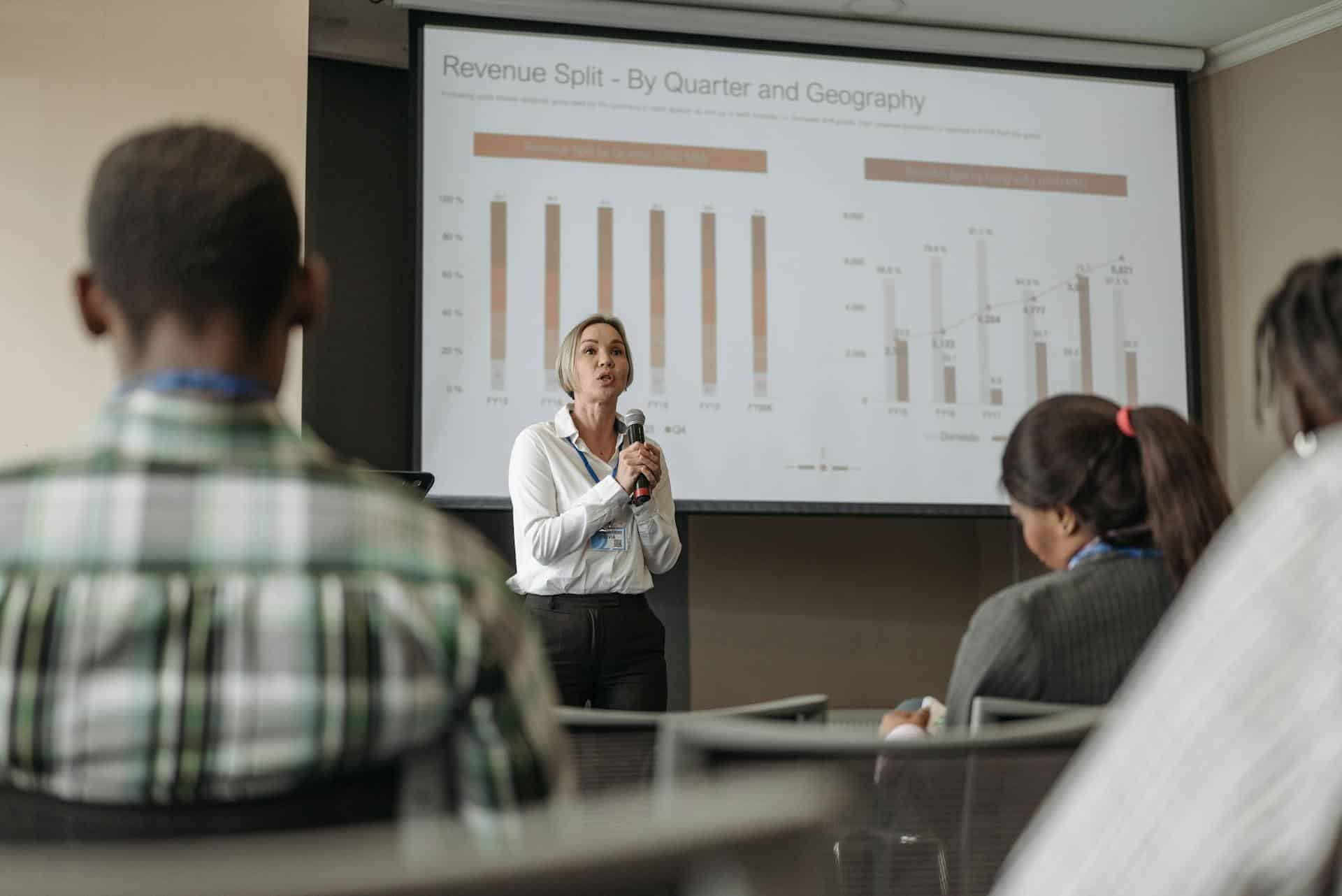What Tracking Gen AI Skills Can Teach Associations About the Future of Work

Generative AI (Gen AI) is transforming the professional landscape, reshaping how work is done across industries. For associations, this shift holds particular significance. With their role in setting standards, modeling excellence, and supporting diverse members, associations must lead by example in adopting and integrating new technologies. The key to unlocking Gen AI’s potential lies in equipping staff, volunteer leaders, and members with the skills necessary to use it effectively. Yet, merely offering training isn’t enough. Tracking progress and outcomes in Gen AI skill development is essential to ensure meaningful, measurable results.
Video: “What Tracking Gen AI Skills Can Teach Associations About the Future of Work”
Podcast: “What Tracking Gen AI Skills Can Teach Associations About the Future of Work”
Why Associations Must Track Gen AI Skill Development
Gen AI tools, from text and image generation to advanced data analysis, require a mix of technical know-how and creative application. In associations, this complexity is amplified by the diversity of member needs and organizational structures, such as regional chapters and demographic sections. Without effective systems to track the development of these skills, associations risk training that is disjointed, underutilized, or misaligned with their strategic goals.
- Skill Application in Real-Life Scenarios: For an association’s staff and volunteers, completing training on Gen AI tools isn’t enough. Leaders must ask how effectively these skills are being applied. Are chapter leaders using AI-generated insights to engage their local membership more effectively? Are staff teams leveraging Gen AI to streamline operations such as event planning or member outreach? Tracking these application rates provides actionable data to refine training and maximize impact.
- Engagement as a Leading Indicator: Tracking engagement metrics during training—such as time spent on learning platforms, participation in AI-based simulations, or interaction frequency with digital tools—offers valuable insights. Low engagement often signals broader challenges, like inadequate support or misalignment between the training content and participants’ actual roles.
- Outcome-Based Metrics: The true measure of Gen AI adoption lies in its results. Metrics such as increased efficiency in member services, enhanced creativity in educational programming, managing risks, or reduced operational errors can reveal how effectively staff and volunteers are translating their Gen AI knowledge into tangible outcomes.
Client Case Study: Integrating Gen AI Skills in an Association
To illustrate the power of tracking Gen AI skill development, consider an association that represents professionals in legal services. Facing pressure to modernize and provide more tailored support to its members, the association decided to integrate Gen AI into its operations. Initial adoption efforts, however, highlighted significant gaps: staff struggled to use AI tools effectively, chapter leaders lacked confidence, and training sessions failed to align with real-world challenges.
As a consultant specializing in Gen AI adoption, I partnered with the association to address these issues. Together, we implemented a comprehensive tracking system, including:
- Baseline Assessments: We assessed staff and volunteer readiness, testing their familiarity with Gen AI and related concepts before launching the training.
- Tailored Training Modules: Based on the assessments, we developed targeted content, such as modules on using AI for member data analysis or enhancing communications with AI-generated suggestions.
- Real-Time Monitoring: An AI-powered learning platform tracked progress across various metrics, offering insights into module completion rates, engagement levels, and assessment scores.
- Outcome Measurement: Post-training, we tracked key performance indicators, including increased member engagement and reduced administrative workloads.
The results were striking. In just six months, 80% of the staff and 67% chapter leaders reported confidence in applying Gen AI tools, up from 30% and 23% at the outset. Membership retention rates improved by over 15%, while the time spent by staff on administrative tasks decreased by more than 25%. These metrics underscored the value of data-driven learning programs tailored to the association’s unique structure.
Identifying and Closing Skills Gaps
Tracking systems are especially critical in identifying skills gaps—whether among staff or volunteers. Associations often face the challenge of addressing varied levels of familiarity with new technologies, from seasoned professionals to newer volunteers with different digital expectations.
For instance, tracking assessments might reveal that volunteer leaders struggle with tasks like interpreting AI-generated insights or crafting effective prompts for text-based tools. With these insights, associations can adapt training content to address these gaps directly, ensuring all participants benefit from the learning experience.
Generative AI training must move beyond a “one-size-fits-all” approach. Associations are uniquely positioned to offer personalized learning journeys, leveraging tracking data to meet the diverse needs of their staff, volunteers, and even members.
For examples of the latter, a section focused on young professionals might prioritize Gen AI training for career advancement, such as resume enhancement using AI tools. Conversely, a section for mid-career professionals might emphasize advanced applications, such as AI-driven career strategic planning. By tailoring training content to the demographics and roles of their members, associations can enhance both engagement and impact.
Using AI to Track AI Learning
The irony is that AI itself offers some of the best tools for tracking progress in learning Gen AI. Advanced learning management systems (LMS) with built-in AI analytics can monitor participant engagement, identify skill gaps, and recommend personalized training modules.
For associations, these tools are particularly valuable. For instance, an AI-enabled LMS might flag a regional chapter that consistently underperforms in certain metrics, suggesting the need for additional support. Conversely, it could highlight high-performing members who might serve as mentors or lead AI adoption initiatives.
Best Practices for Associations Tracking Gen AI Skills
To fully harness the power of tracking, associations should follow these best practices:
- Align Objectives with Strategic Goals: Ensure training aligns with key priorities, such as improving member engagement, enhancing programming quality, or reducing operational inefficiencies.
- Simulate Real-World Scenarios: Build training modules that mirror challenges faced by staff and volunteers, bridging the gap between theoretical learning and practical application.
- Encourage Feedback Loops: Combine data tracking with qualitative feedback to fine-tune training programs. Understanding participant experiences ensures continuous improvement.
- Adapt Training to Changing Needs: With Gen AI evolving rapidly, associations must regularly update their training content and tracking mechanisms to stay ahead of the curve.
Conclusion: Setting the Standard for the Future
As associations work to model excellence and support their members, effectively tracking Gen AI skill development will be a critical differentiator. By implementing robust systems to monitor progress, identify gaps, and personalize learning, associations can lead their industries into the AI-driven future. This approach not only ensures operational excellence but also sets a powerful standard for the professionals they serve, fostering a culture of continuous innovation and growth.
Key Take-Away
Tracking Gen AI skills is crucial for associations to lead in innovation. By monitoring training engagement, real-world application, and outcomes, associations can close skill gaps, align learning with strategic goals, and empower members for the… Share on XImage credit: Pavel Danilyuk/pexels
Dr. Gleb Tsipursky was named “Office Whisperer” by The New York Times for helping leaders overcome frustrations with hybrid work and Generative AI. He serves as the CEO of the future-of-work consultancy Disaster Avoidance Experts. Dr. Gleb wrote seven best-selling books, and his two most recent ones are Returning to the Office and Leading Hybrid and Remote Teams and ChatGPT for Thought Leaders and Content Creators: Unlocking the Potential of Generative AI for Innovative and Effective Content Creation. His cutting-edge thought leadership was featured in over 650 articles and 550 interviews in Harvard Business Review, Inc. Magazine, USA Today, CBS News, Fox News, Time, Business Insider, Fortune, The New York Times, and elsewhere. His writing was translated into Chinese, Spanish, Russian, Polish, Korean, French, Vietnamese, German, and other languages. His expertise comes from over 20 years of consulting, coaching, and speaking and training for Fortune 500 companies from Aflac to Xerox. It also comes from over 15 years in academia as a behavioral scientist, with 8 years as a lecturer at UNC-Chapel Hill and 7 years as a professor at Ohio State. A proud Ukrainian American, Dr. Gleb lives in Columbus, Ohio.

